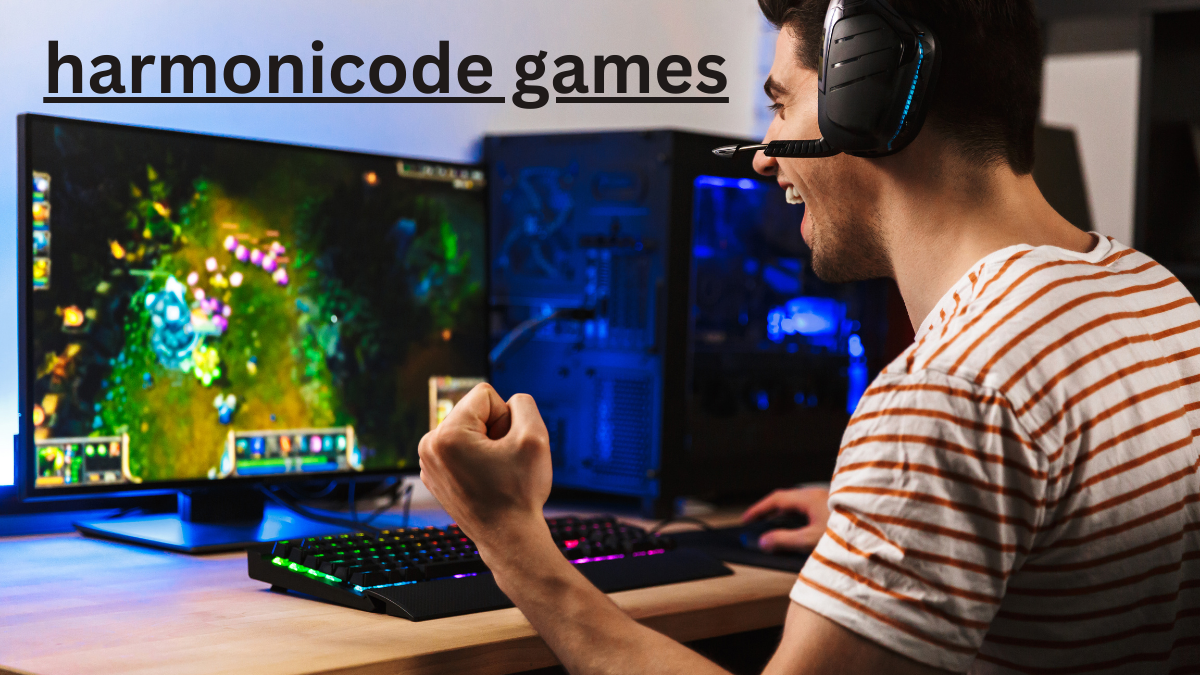Music has always been a part of gaming—whether it’s the nostalgic 8-bit tunes of early arcade games or today’s sweeping orchestral soundtracks. But what happens when music becomes more than just the background? Enter “harmonicode games“, a video game genre redefining how players engage with sound and gameplay. By blending rhythm, tempo, and melody with interactive mechanics, these games allow players to be more than spectators of music—they become participants in creating it.
If you’ve been curious about harmonicode games and why they’re making waves in the gaming industry, read on. We’ll explore what harmonicode games are, how they’ve evolved over time, some standout titles, and the surprising cognitive and emotional benefits offered by this innovative genre.
What Are Harmonicode Games?

At their core, harmonicode games integrate music into gameplay mechanics in a way that’s more interactive and immersive than traditional games. Unlike conventional video games where music serves as a backdrop, in harmonicode games, the player’s movements, actions, and decisions directly influence the rhythm, melody, and tempo of the soundtrack.
For example, imagine playing a game where every successful move you make creates a beat, every navigation alters the tempo, and every choice contributes to the overall composition. The game and the music become inseparable, creating a dynamic experience where the player is as much a musician as they are a gamer.
Evolution of Harmonicode Games
Harmonicode games didn’t spring up overnight. They evolved from earlier rhythm-based games that paved the way for this innovative genre. Here’s a brief timeline of the evolution of harmonicode games:
The Early Days of Rhythm Games
The genre started with iconic rhythm games like Dance Dance Revolution (1998) and PaRappa the Rapper (1996). These games required players to match their actions to beats and rhythms shown on the screen. While revolutionary for their time, music in these games was still largely pre-determined—the player’s role was simply to follow along.
A New Era of Interaction
Fast forward to the mid-2000s, and games like Guitar Hero and Rock Band took music-based gaming to the next level. These titles introduced plastic instrument controllers, giving players the feeling of being part of a live performance. The gameplay didn’t just rely on matching beats; it mimicked the experience of playing in a band, making it more immersive.
Harmonicode Games Take Shape
The harmonicode genre truly came into its own with the arrival of titles like Beat Saber and Thumper. These games not only demanded precision and rhythm but actively involved players in shaping the music itself. For instance, in Beat Saber, each wave of motion creates a part of the beat, making the music contingent on the player’s actions. Harmonicode games blurred the line between playing a game and composing music, creating an entirely new level of interactivity.
Iconic Harmonicode Games You Should Know
Some harmonicode games have achieved both critical and commercial success, leaving a mark on the industry as defining examples of what this genre can achieve. Let’s take a closer look at a few standout titles:
1. Guitar Hero
A cultural phenomenon in the mid-2000s, Guitar Hero turned living rooms into concert stages. Players used a guitar-shaped controller to hit notes in time with popular rock tracks, creating the illusion of being a lead guitarist in a band. Its intuitive gameplay and killer soundtrack made it iconic.
2. Beat Saber
This VR sensation combines rhythm gameplay with lightsaber mechanics. Players swing virtual sabers to the beat of high-energy tracks, slicing through blocks as they come their way. Beat Saber not only provides an exhilarating experience but also serves as an effective workout, earning it a dedicated fanbase.
3. Thumper
Described as a “rhythm violence” game, Thumper is both hypnotic and intense. Players control a metallic beetle hurtling down a cosmic track, hitting beats in an otherworldly soundtrack. The game’s visual and auditory experience feels like an adrenaline-fueled concert.
4. Rez Infinite
A sensory masterpiece, Rez Infinite blends shooter mechanics with harmonicode gameplay. Players’ actions directly impact the pulsating soundscapes, creating an unforgettable audiovisual experience.
Why Harmonicode Games Are More Than Just Fun
Harmonicode games aren’t just engaging—they also offer surprising cognitive and emotional benefits. Here’s how they go beyond entertainment:
1. Cognitive Stimulation
Playing harmonicode games requires focus, quick reflexes, and a knack for timing. By continuously syncing actions with rhythm, players sharpen their hand-eye coordination and multitasking abilities. These games also stimulate the brain’s reward system, as successfully creating music offers instant gratification.
2. Stress Relief
The immersive nature of harmonicode games makes them excellent stress relievers. Paying attention to beats and patterns helps players “zone out” from real-world worries, akin to the calming effects of meditation. Many describe playing these games as a therapeutic, almost zen-like experience.
3. Emotional Connection
Harmonicode games often evoke strong emotions through music. The act of influencing and shaping the soundtrack creates a deep connection between the player and the game. Whether it’s the adrenaline rush of hitting every beat perfectly or the satisfaction of compiling a beautiful melody, these emotions make the gameplay experience powerful and memorable.
4. Building a Broader Appreciation of Music
By making players active participants in creating music, harmonicode games foster a greater appreciation for rhythm, dynamics, and structure. For many gamers, these experiences offer a new perspective on music as an art form.
The Future of Harmonicode Games
The rise of harmonicode games reflects their growing cultural and artistic significance. With advances in technology, including VR, AR, and adaptive AI, the possibilities for this genre are only expanding.
Imagine games that adapt in real-time to the player’s mood, creating a soundtrack that perfectly matches their state of mind. Or multiplayer harmonicode games, where players worldwide collaborate on a single piece of music.
These games also hold immense potential for education. For aspiring musicians, harmonicode games could become valuable tools for learning rhythm, tempo, and composition in a fun, interactive way.
Closing Thoughts: Why You Should Try Harmonicode Games
“Harmonicode games” are more than just a passing trend—they’re an exciting evolution in both the gaming and music industries. They represent a beautiful fusion of sound and interactivity, offering players not just entertainment but a deeper connection to music itself.
If you’re ready to explore the creative, immersive world of harmonicode games, now’s a better time than ever to get started. Whether you’re shredding on virtual guitars in Guitar Hero or slicing beats in Beat Saber, this genre offers something truly unique.

